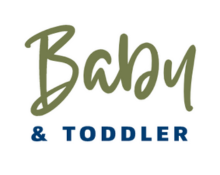
Paced responsive feeding is an approach to bottle feeding that aims to mimic the natural flow and pace of breastfeeding. It involves being responsive to your baby’s hunger and fullness cues and allowing them to take an active role in the feeding process. This method can help prevent overfeeding, reduce the risk of nipple confusion, and promote a healthy feeding experience for both baby and caregiver. Here are some key principles of paced responsive feeding:
Hold your baby in an upright position: Keep your baby in a semi-upright or slightly reclined position during the feeding. This helps with digestion and reduces the risk of choking.
Offer the bottle when your baby shows hunger cues: Look for signs of hunger such as rooting, lip smacking, or sucking motions. It’s important to respond to your baby’s hunger cues promptly.
Allow your baby to initiate feeding: Instead of inserting the bottle into your baby’s mouth right away, gently touch the nipple to their lips and wait for them to open their mouth and actively latch onto the nipple.
Use a slow flow nipple: Choose a bottle nipple with a slow flow rate that allows your baby to control the milk flow. This helps prevent overfeeding and allows them to regulate their intake.
Pause frequently: During the feeding, pause the feeding every few minutes by tilting the bottle downward. This gives your baby an opportunity to rest, swallow, and indicate if they are full. You can also gently stroke their cheek or offer them a break if they seem overwhelmed or need a pause.
Watch for fullness cues: Observe your baby for signs that they are getting full, such as decreased sucking, turning away from the bottle, or closing their lips. Respect their cues and avoid trying to finish the bottle if they indicate they are satisfied.
Burp your baby: Take breaks during the feeding to burp your baby. Hold them upright against your shoulder or sit them upright and gently pat or rub their back to help release any trapped air.
Follow your baby’s lead: Each baby is unique, and their feeding preferences may vary. Pay attention to your baby’s cues and adjust the pace, frequency, and duration of feedings based on their individual needs.
Paced responsive feeding is not only beneficial for bottle-fed babies but can also be helpful for breastfeeding mothers who occasionally need to use a bottle. It promotes a more relaxed and comfortable feeding experience, fosters a healthy feeding relationship, and supports the development of self-regulation skills in your baby.
If you have any concerns or questions about paced responsive feeding, consider reaching out to a lactation consultant or healthcare provider who can provide further guidance and support based on your specific situation.
